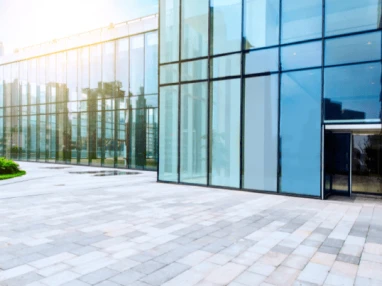 For successful architectural projects, architects must follow certain rules and guidelines. For example, a building should be safe, functional and cost-effective. It should also enhance the purpose for which it was designed. These guidelines must be followed from the initial design concept through to the final delivery to the client.
For successful architectural projects, architects must follow certain rules and guidelines. For example, a building should be safe, functional and cost-effective. It should also enhance the purpose for which it was designed. These guidelines must be followed from the initial design concept through to the final delivery to the client.
Aluminium is a building material that allows for elaborate shapes
Among its many benefits, aluminium is strong, lightweight, and air-tight. This property makes it a great choice for buildings that need to be completely climate-controlled. In addition, it can be easily cast, extruded, rolled, and welded, making it a very versatile material for building structures.
Aluminum is lightweight and has excellent corrosion-resistant properties.
This property, combined with its high machinability, durability, and reflectivity, has made it an ideal building material. The alloy 6061 is particularly versatile, allowing architects and builders to design intricate shapes with aluminum. The metal is also sound-proof, making it a popular choice for window frames and roofs.
Aluminium Windows is also environmentally friendly, making it a good choice for both commercial and residential construction. Its neutral chemical composition means that the construction industry does not contribute to air pollution or have any other negative effects. In addition, it has an endless number of building engineering applications.
Aluminium is a good conductor of electricity
When you are looking for a good conductor of electricity in an architecture project, aluminium is an excellent material to consider. It is less expensive than copper and a third less dense, making it an ideal choice. It also has many advantages, such as being durable, flexible, and heat-resistant. Moreover, it does not rust or react with oxygen, which makes it ideal for use in architectural projects.
It is used in a variety of applications ranging from aircraft and transportation to architecture. It is also used in household items and is an excellent conductor of electricity. This lightweight material has good heat capacity, is recyclable, and is a superior conductor of electricity compared to copper.
It is one of the best metals for conducting electricity, and can even be referred to as a super conductor. This means that the resistance to an electrical current will vanish as it cools, allowing the metal to conduct electricity at very high levels. This property makes aluminum ideal for high-voltage power cables, while copper is better for low-voltage cables, such as those used in cars and homes.
Aluminium is a building material that allows for extra protection from the elements
Aluminium is a valuable building material because it allows for extra protection against the elements.Its high emissivity (ability to emit heat) and high reflectivity (ability to reflect light) properties make it an excellent choice for buildings that need extra protection from the elements.
It is also lightweight and corrosion-resistant. Its light weight and versatility make it a great choice for large construction projects. It is also much easier to move than steel structures. Another benefit of aluminum is that it is recyclable. It also resists rusting and is non-toxic.
However, this material is not completely without its drawbacks. Aluminium is prone to corrosion. Corrosion is caused by moisture and the process is slow but persistent. If aluminum is not stored properly, it can eventually corrode, leaving large holes in it. To avoid this, it is important to store aluminum in a climate-controlled environment.
Aluminium is a building material that allows for adaptability to any design situation
Aluminium is a versatile, lightweight building material that can be shaped into virtually any shape. It is also strong and corrosion-resistant. Its properties make it an attractive choice for buildings and are made even more desirable by its low specific weight, which is only 2.7 grams per cubic centimetre. Aluminium Doors is also recyclable, which ensures continued use of this material in construction.
Aluminium is an insoluble metal in water and a stable, ductile metal in air.
When exposed to air, it forms a thin oxide layer, which protects the metal from further oxidation. This layer is only a few thousandths of a millimetre thick, which makes it resistant to air and moisture.
In addition to its flexibility and low maintenance requirements, aluminium is also very eco-friendly. Buildings constructed with aluminium can be designed for LEED green building certification. Its high-performance properties make it a great choice for modern architecture.

